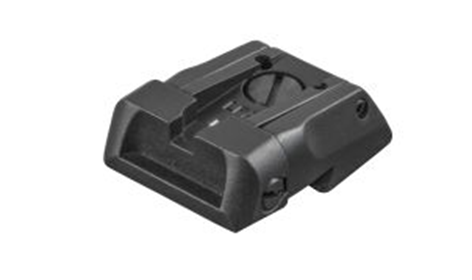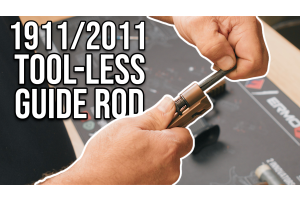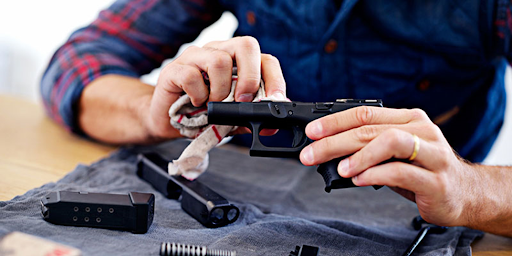
A Comprehensive Journey Through the Rich History of 1911 Pistols
0%

Introduction
Since its introduction over a century ago, the 1911 pistol has captured the imaginations of firearm enthusiasts and professionals alike. Developed by the legendary John Browning, the 1911 pistol has a storied history that spans military conflicts, civilian use, and its enduring presence as an iconic firearm design. In this article, we will embark on a fascinating journey through the evolution, significance, and enduring legacy of the 1911 pistol. From its early development to its role in shaping firearms design, we will explore the impact of this legendary handgun in great detail.
The Birth of the 1911
John Browning:
A Visionary Engineer John Moses Browning, a renowned American firearms designer, possessed an exceptional ability to innovate and create groundbreaking firearms. Born in 1855 in Ogden, Utah, Browning's passion for engineering led him to develop numerous firearms that revolutionized the industry. His deep understanding of mechanical principles and keen eye for design laid the foundation for the 1911 pistol.
The Quest for a Semiautomatic Sidearm
In the late 19th century, semiautomatic pistols were gaining popularity due to their increased firepower and ease of use. Browning recognized the potential of this technology and set out to create a semiautomatic pistol that would address the limitations of existing designs.
The Trials and Triumphs of the 1906 and 1907 Models
Browning's journey towards the creation of the 1911 pistol saw the development of several significant prototypes, notably the 1906 and 1907 models. These early designs incorporated innovative features such as a short recoil system and a detachable box magazine. Browning's dedication to refinement and continuous improvement pushed him to subject these prototypes to rigorous testing and evaluation.
Through countless trials and numerous iterations, Browning fine-tuned the design of the 1906 and 1907 models. He addressed potential shortcomings, improved ergonomics, and ensured optimal functionality, all while staying true to his vision of creating a semiautomatic pistol that would set new standards in the industry.
The M1911: The Official Birth of a Legend
The pinnacle of Browning's efforts came to fruition with the introduction of the M1911, the official designation for the 1911 pistol adopted by the United States Army. In 1911, the U.S. Army sought to replace their aging inventory of revolvers with a modern, semiautomatic pistol. Browning's design proved to be the perfect solution.
Manufactured by Colt, the M1911 featured a .45 ACP (Automatic Colt Pistol) caliber, a seven-round magazine capacity, and a robust and reliable design. It showcased Browning's mastery of engineering principles, combining a short recoil system, single-action trigger, and a grip angle that felt natural in the hand. The M1911 passed extensive testing and emerged as the clear choice for the U.S. Army's new standard-issue sidearm.
With the official adoption of the M1911, the 1911 pistol was born, forever solidifying its place in firearms history. The M1911 became an icon of military sidearms and set the stage for its remarkable journey through both military and civilian realms. The birth of the 1911 pistol marked a turning point in firearms design, introducing a new era of semiautomatic handguns that would influence future generations of firearms enthusiasts and shape the industry for decades to come.
The 1911 in Military Service
The 1911 Meets the United States Armed Forces
The adoption of the M1911 by the U.S. Army marked the beginning of its illustrious military service. Its exceptional stopping power, reliability, and ease of use made it an invaluable weapon for American troops. The Army's decision to replace the aging revolvers with the 1911 signaled a shift towards modern firearm technology and set the stage for the pistol's widespread recognition.
World War I: A Test of Valor and Firepower
During World War I, the 1911 played a significant role in the trenches of Europe. It offered superior firepower compared to its adversaries and earned a reputation for its stopping power and reliability, enhancing the confidence and effectiveness of American soldiers. The 1911's performance in the war solidified its status as a trusted sidearm and bolstered its reputation worldwide.
World War II: A Global Stage for the 1911
The 1911 continued its service in World War II, with American soldiers relying on it in theaters of war around the globe. Its rugged construction and powerful .45 ACP round made it a formidable weapon, both in close-quarters combat and as a sidearm for officers. The 1911's reputation for reliability and its ability to deliver decisive stopping power contributed to its continued use during World War II. The pistol saw action in major battles such as the D-Day invasion, the Pacific island-hopping campaign, and the European and North African theaters. Its performance in combat further solidified its status as a trusted firearm and instilled confidence in the soldiers who carried it.
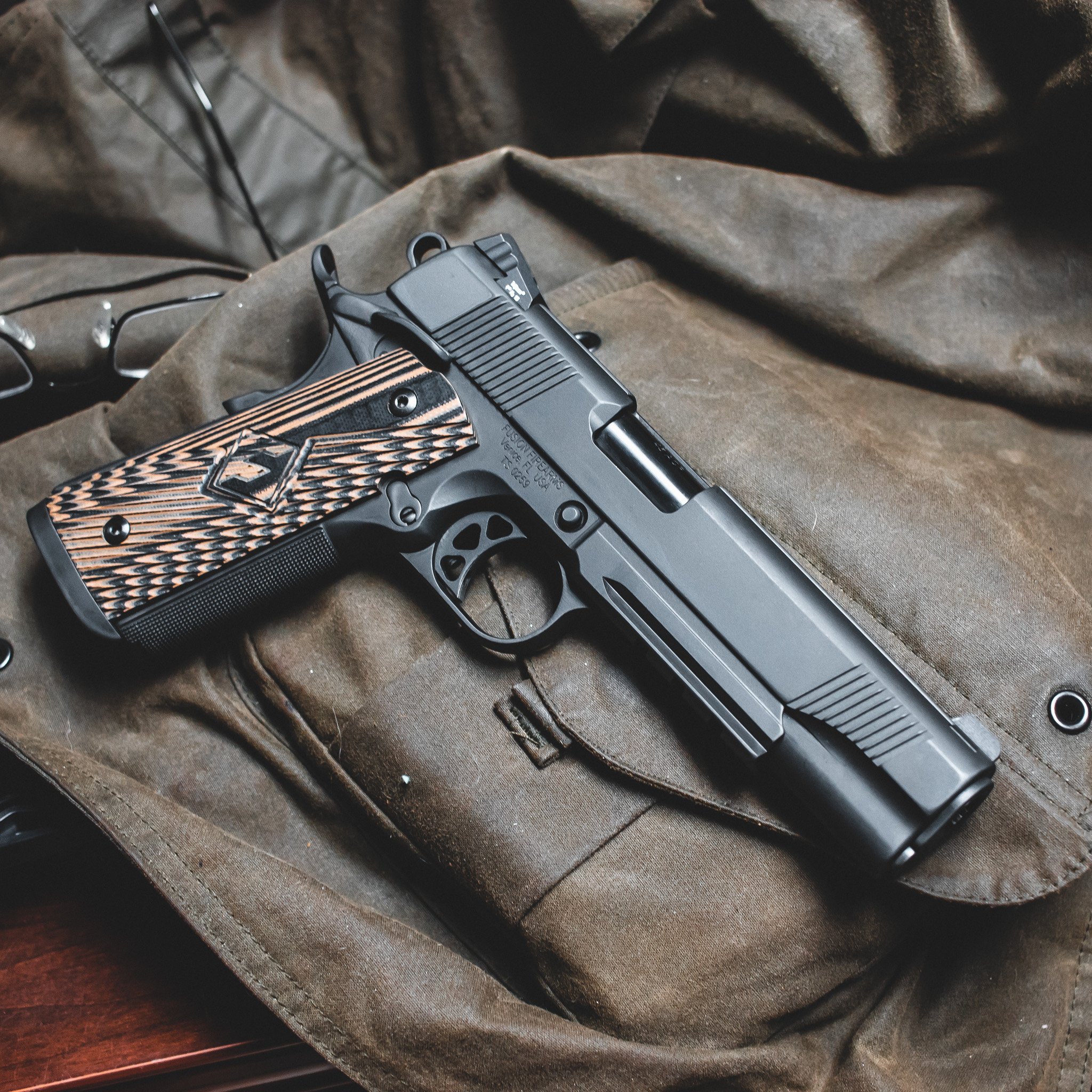

The Korean War and Beyond: Continued Military Use
Following World War II, the 1911 remained a standard-issue sidearm for the U.S. military during the Korean War. It continued to serve in various capacities, including by Special Forces units and military police, well into the late 20th century. Despite advancements in firearm technology, the 1911's reputation for reliability and its familiarity among servicemen kept it in service for an extended period.
The Civilian Market and Cultural Impact
A Firearm for All: The 1911 and Personal Protection
After its military service, the 1911 pistol found its way into the hands of civilians who recognized its reliability and stopping power as an ideal choice for personal protection. The pistol's robust design, combined with the .45 ACP cartridge, provided individuals with a sense of security and confidence in their ability to defend themselves. Its adoption by civilians reinforced the 1911's reputation as a dependable and effective self-defense firearm.
Target Shooting and Competitive Shooting: The 1911's Accuracy and Precision
The accuracy and precision of the 1911 made it a favorite among target shooters and competitive shooters. Its crisp trigger, excellent ergonomics, and inherent accuracy allowed shooters to achieve remarkable results on the range. The 1911 became synonymous with precision shooting and established itself as a popular choice in various shooting competitions, including IPSC (International Practical Shooting Confederation) and USPSA (United States Practical Shooting Association) matches.
Hollywood's Love Affair with the 1911
The 1911 pistol's iconic design and rich history made it a natural choice for Hollywood filmmakers. Countless films featuring action heroes and military characters prominently showcased the 1911, solidifying its image as the epitome of a powerful and reliable firearm. From classic war movies to contemporary action blockbusters, the 1911 has become a fixture on the silver screen, further enhancing its cultural significance and popularity.


Innovations and Variations
The Rise of the Colt 1911A1
The Colt 1911A1, an improved version of the original M1911, gained prominence during World War II. It featured several enhancements, including a shorter trigger, a longer grip safety spur, and a more durable finish. These modifications addressed user feedback and further solidified the 1911's reputation as a reliable and effective firearm. The 1911A1 became the standard model produced during the war and continued to be manufactured after the conflict.
Post-War Evolution: The Colt Government Model
In the post-war years, the Colt Government Model continued to evolve, incorporating refinements based on user feedback and advances in manufacturing technology. Various models emerged, offering different barrel lengths, sights, and grip options to cater to individual preferences. The Colt Government Model became the flagship offering from Colt and served as the basis for other manufacturers' 1911 variants. The pistol's enduring popularity led to the development of specialized models for law enforcement, target shooting, and concealed carry purposes. These variations featured enhancements such as adjustable sights, lightweight frames, extended magazines, and improved ergonomics to meet the specific needs and preferences of different users.
Customization and Aftermarket Modifications
One of the remarkable aspects of the 1911 platform is its versatility for customization. Firearm enthusiasts and competitive shooters embraced the ability to modify and personalize their pistols, leading to a vibrant aftermarket industry. From grip enhancements and trigger upgrades to custom finishes and barrel modifications, the 1911's design allowed for endless possibilities, tailoring the pistol to individual preferences and shooting styles. This customization culture further contributed to the popularity and continued relevance of the 1911 in modern times.
The Rise of the 1911 Clones
Recognizing the popularity and demand for the 1911, numerous firearm manufacturers began producing their own versions of the iconic pistol. These "clones" maintained the essential design features and compatibility with aftermarket parts, offering consumers a wide range of options from various manufacturers. This proliferation of 1911 clones expanded the availability of the platform and contributed to its enduring popularity. While Colt remains the most iconic and revered producer of 1911 pistols, the availability of high-quality clones from other manufacturers has given enthusiasts even more choices and options to suit their preferences.
The 1911 in Modern Times
Military and Law Enforcement Use Today
While no longer the standard-issue sidearm for the U.S. military, the 1911 still finds use among certain specialized units and law enforcement agencies. Its exceptional reliability, inherent accuracy, and stopping power make it a preferred choice in specific applications where these characteristics excel. The 1911's proven track record and the familiarity of its manual of arms ensure its continued use in certain tactical environments.
The 1911's Enduring Popularity among Gun Enthusiasts
Despite the introduction of modern polymer-framed handguns and striker-fired designs, the 1911 pistol has maintained its dedicated following among gun enthusiasts. Its timeless design, exceptional trigger, and inherent accuracy continue to appeal to those who appreciate the craftsmanship and heritage associated with the platform. The 1911's enduring popularity is a testament to its iconic status and its ability to stand the test of time.
Contemporary Manufacturers and Their Offerings
Today, a multitude of manufacturers produce their own versions of the 1911 pistol, offering a wide array of options to cater to different tastes and preferences. Companies such as Colt, Springfield Armory, Kimber, Smith & Wesson, Fusion Firearms, and many others provide a diverse range of 1911 models, incorporating modern features while preserving the classic design elements that made the pistol legendary. These manufacturers continue to innovate, introducing advancements such as improved sights, enhanced ergonomics, lightweight materials, and modular designs to meet the demands of today's shooters.
The Legacy of the 1911 in the 21st Century
The legacy of the 1911 pistol extends well into the 21st century. Its influence on firearm design and its impact on popular culture remains significant. The 1911's iconic silhouette, distinctive grip angle, and reputation for reliability have inspired the development of subsequent handgun designs. Its heritage as a symbol of American engineering and its role in shaping firearms history continue to captivate both seasoned collectors and new generations of firearms enthusiasts. The 1911's timeless appeal ensures its place as one of the most revered and celebrated firearms of all time.
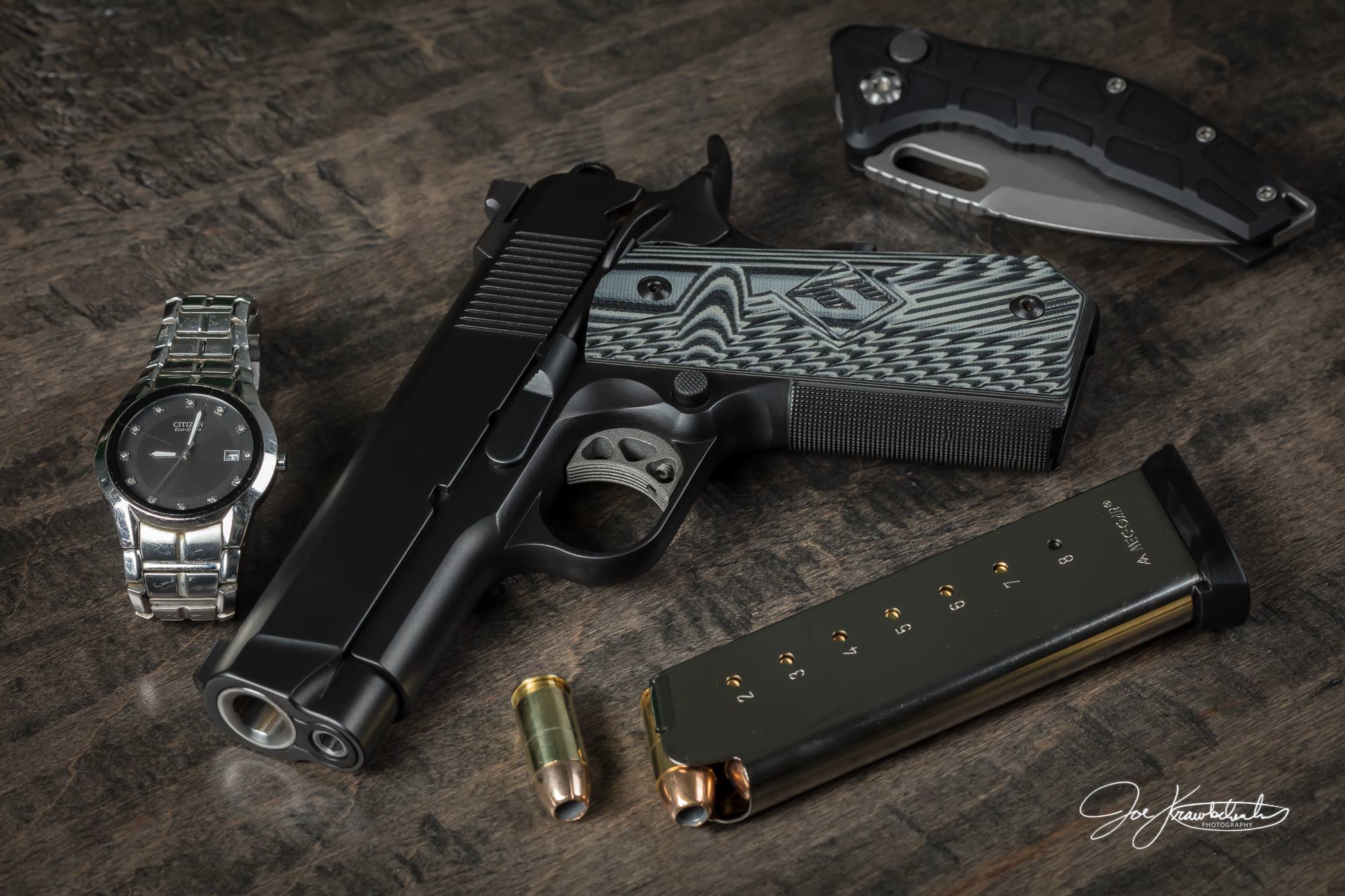

Conclusion
The 1911 pistol stands as a testament to the ingenuity of John Browning and its enduring impact on the world of firearms. From its early days as a military sidearm to its widespread civilian adoption, the 1911 has left an indelible mark on history. Its exceptional design, reliability, and precision have solidified its place as an iconic firearm. The 1911's versatility for personal protection, its accuracy for target shooting, and its cultural significance in popular media have made it a timeless symbol of power and craftsmanship.
As we delve into the rich history of the 1911 pistol, we appreciate its evolution from Browning's visionary engineering to its adoption by the U.S. Army and subsequent use in major conflicts. Its impact on the civilian market, both as a self-defense firearm and a favored choice for competitive shooting, has further elevated its status. The 1911's enduring popularity is evident in the wide range of manufacturers producing their own variations, as well as the robust aftermarket industry dedicated to customization.
In the modern era, the 1911 continues to be appreciated by military and law enforcement units for its reliability and effectiveness. Its timeless design and exceptional performance have solidified its place as a preferred sidearm in specific applications. Meanwhile, among gun enthusiasts, the 1911 remains an object of desire, embodying a combination of heritage, craftsmanship, and unmatched shooting experience.
As we reflect on the legacy of the 1911 pistol, we recognize its enduring impact on firearm design, its cultural significance, and its unwavering popularity among shooters of all backgrounds. The 1911 will forever be celebrated as a symbol of excellence, innovation, and the rich history of firearms evolution.


